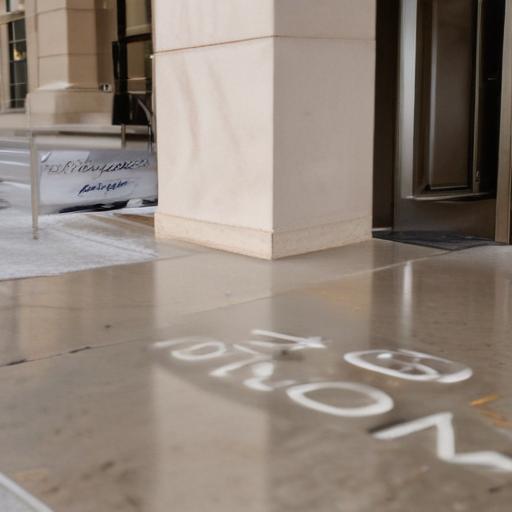Edwin Reyes-Garcia’s case shines a light on how immigration enforcement intersects with low‑level criminal matters at local courthouses. The 27-year-old Honduran man, who had been living in Maryland, was taken into federal custody by U.S. Immigration and Customs Enforcement (ICE) on Aug. 7 after pleading guilty to a DUI and related traffic charges at Lancaster County’s DUI Central Court. He is currently held at ICE’s Moshannon Valley Processing Center in Clearfield County, about 180 miles northwest of Lancaster.
Reyes-Garcia’s attorney, Jonathan Chieppor, said he had never before seen ICE agents at DUI Central Court, though he anticipated they might come for his client. “My client’s and my understanding was, whether or not he pleaded guilty or was found guilty of the offense, ICE was going to pick him up regardless,” Chieppor said. Defense sources noted that ICE’s presence at the sentencing stage has become more common as authorities pursue detention of undocumented individuals.
In a statement added to Thursday’s update, DHS said an immigration judge issued a final removal order for Reyes-Garcia on Jan. 17, 2025, and that he appealed to the Board of Immigration Appeals.
The Department’s wording touched on a broader political context, with a reference to policies associated with former President Donald Trump and former Homeland Security Secretary Kristi Noem in the past. The statement said: “if you break the law, you will face the consequences. Criminal illegal aliens are not welcome in the U.S.”
Chieppor described the DUI case as a difficult one to navigate. He noted that defendants at DUI Central Court are presumed innocent, and he suggested that ICE’s appearance at that stage is not routine in all jurisdictions. Erik Yabor, a Lancaster County District Attorney’s Office spokesperson, said appearing at DUI Central Court with ICE would not necessarily violate common practice, given that some DUIs can be pleaded there.
Other attorneys told LNP | LancasterOnline they have observed ICE detaining individuals who appear in court, and some said ICE has detained another person the same day Reyes-Garcia was taken into custody, though they could not identify who that person was or who represented them.
The story also touched on a separate case involving Ester Soliman, a Lancaster city resident detained by ICE on Aug. 4 while attending an Alternatives to Detention hearing. Soliman, who came from the Philippines on a tourist visa that expired in 2000, was deported on Aug. 15. ICE has indicated that it has the authority to detain and remove individuals whose removal orders are final, as shown by Soliman’s situation.
Reyes-Garcia’s DUI charge stemmed from an incident on June 21, when Manheim Borough police stopped him after his vehicle crossed the double yellow line three times on Lebanon Road in Rapho Township. His blood-alcohol content was measured at 0.107%, above Pennsylvania’s 0.08% limit, and he did not have a valid driver’s license.
Defense attorney Chieppor said Reyes-Garcia had no prior criminal record. Under the plea terms, he faced the possibility of house arrest and six months of probation for the DUI and two summary traffic violations.
Several lawyers interviewed by the outlet argued that courthouse arrests can be a strategic method for ICE to locate and detain targets, sometimes without notice to the defendant. David Erhard, another defense attorney, described a tactic wherein plain-clothed ICE agents wait for a defendant’s exit from court and then take custody immediately, which can leave defendants with limited opportunity to challenge the arrest at the moment it occurs.
What this case illustrates is a broader tension between enforcing immigration law and protecting the rights of individuals who appear in local courts for relatively minor offenses. DHS has argued that courthouse arrests save law enforcement resources and improve safety by ensuring suspects are screened beforehand. Critics, including defense attorneys, say the practice can intrude on due process and place people in a difficult position simply for attending required court appearances.
Additional context and commentary
– ICE’s Alternatives to Detention program is referenced as a mechanism to monitor certain immigration cases without full detention.
– The discussion in Lancaster County reflects a national debate about how immigration enforcement intersects with local criminal justice systems, especially for individuals with limited or no lawful status who commit non-violent offenses.
– The algebra of final removal orders and appeals means some defendants may face detention even after resolving a local charge, raising questions about timing and transparency in the process.
Summary of practical takeaways
– ICE has been active in courthouse settings, including at sentencing or arraignment stages, for certain cases.
– Local defense attorneys warn that this practice can complicate clients’ ability to participate in court and to understand their options.
– DHS maintains that courthouse enforcement is a resource-and-safety measure, while critics seek greater due-process safeguards.
Potential angles for readers
– How courthouse ICE arrests affect defendants’ legal strategy and outcomes.
– The balance between public safety interests and individual rights in immigration enforcement.
– The role of Alternatives to Detention programs in shaping detention decisions.
Positive or hopeful note
– The ongoing debate could drive clearer policies and stronger protections for defendants, ensuring that public safety measures do not unintentionally undermine access to fair court processes.
Note: This rewrite preserves core facts from the original report while clarifying timelines and roles, and adds context to help readers understand the broader implications of courthouse ICE activity.
